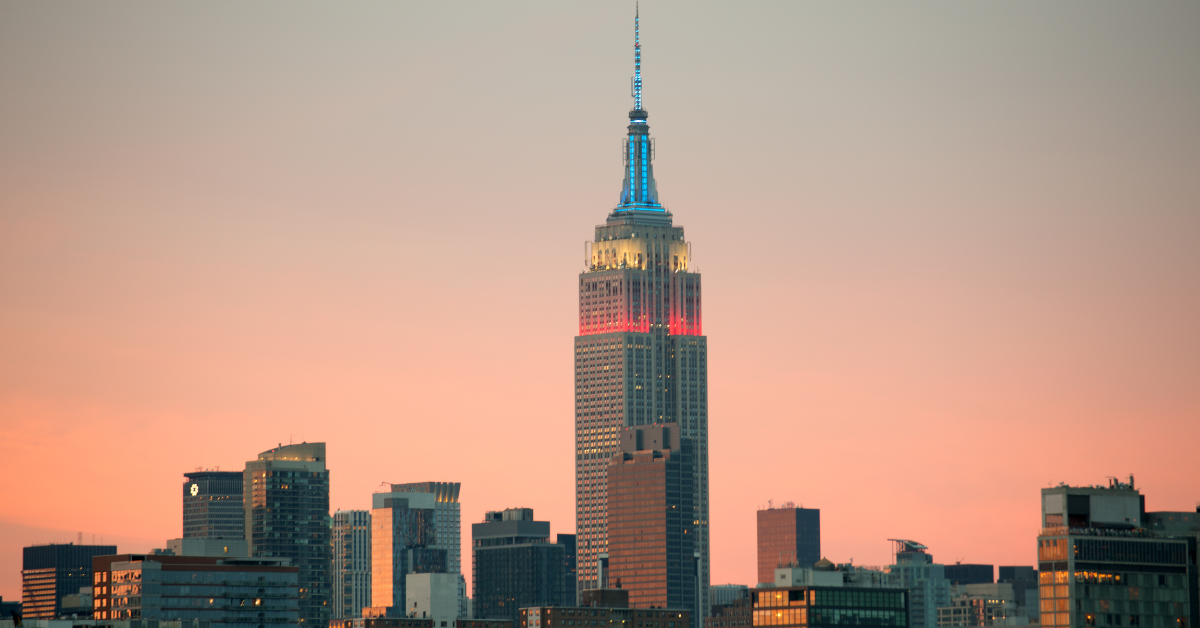For many Japanese travelers, the Empire State Building is more than just a skyscraper. It is a cultural symbol deeply connected with movies, history, and the image of America itself. From the moment they first look up at its towering height to the breathtaking views from the observation deck, Japanese visitors consistently describe their experiences with awe and admiration.
- What is the Empire State Building?
- First Impressions of Japanese Visitors
- Experiences from the Observation Deck and Time-of-Day Differences
- Historical and Film Connections
- Convenience and Precautions Noted by Japanese Visitors
- Symbolic Meaning for Japanese Visitors
- Seasonal Impressions
- Comparisons with Other Observation Spots
- Tips to Enjoy Your Visit
- Conclusion
What is the Empire State Building?
The Empire State Building, completed in 1931, is a 381-meter-high skyscraper named after New York State’s nickname, “Empire State.” Once the tallest building in the world, it has symbolized American modernization and progress. Today, millions of tourists visit each year, securing its status as one of the world’s most famous attractions.
For Japanese visitors, this building carries the meaning of “a symbol of America.” Many say that the moment they first see it in person, they feel, “The scenes I saw in movies and photos have become real.”
First Impressions of Japanese Visitors
Most visitors are struck by the overwhelming height and presence of the building. Even those accustomed to skyscrapers in Tokyo or Osaka find the Empire State Building especially impressive, standing out in the dense cluster of Manhattan towers.
During the day, the Art Deco design stands sharply against the blue sky, while at night, the illuminated silhouette floats like a jewel above the city. Many Japanese remark on how the lights change for different events and holidays, noting that “the building shows a different face every time you visit.”
Experiences from the Observation Deck and Time-of-Day Differences
Japanese visitors are deeply moved by the views from the observation deck. Daytime offers a wide cityscape, while nighttime reveals a glittering sea of lights. Sunset is especially popular because many feel they can “enjoy two different atmospheres at once.”
| Time of Day | Common Impressions |
|---|---|
| Daytime | The city’s shape is clear, offering a real sense of scale |
| Evening | The blend of sky colors and city lights feels magical |
| Night | The view resembles a carpet of lights, creating a sense of the extraordinary |
In addition, many are surprised by the strong winds and temperature differences, noting that even in summer, a light jacket can be useful.
Historical and Film Connections
The Empire State Building is repeatedly featured in films such as King Kong and Sleepless in Seattle. For Japanese visitors, this often creates the feeling of “stepping into the movies themselves.” The building’s historical significance also resonates, particularly with older generations who grew up admiring American culture during Japan’s postwar period.
Films Japanese Visitors Often Associate With
| Film | Japanese Impressions |
|---|---|
| King Kong | “It was moving to stand at the site of that famous scene.” |
| Sleepless in Seattle | “I remembered the romantic reunion scene.” |
| Others | “It felt like entering the world of cinema.” |
Convenience and Precautions Noted by Japanese Visitors
Many visitors praise the “fast and comfortable elevators.” However, during busy hours, long waits can occur before entering.
| Aspect | Japanese Impressions |
|---|---|
| Signage | Clear and easy to understand, providing reassurance |
| Crowds | Especially long waits during nighttime hours |
| Tickets | Online advance purchase is efficient and convenient |
| Manners | Japanese visitors are noted for politely waiting their turn |
Symbolic Meaning for Japanese Visitors
For Japanese people, the Empire State Building represents more than just a tourist attraction—it is a place to “experience the power of America.” For the generation that admired America during Japan’s postwar recovery and economic boom, the building was seen as “a dream destination.”
Today, many younger visitors are motivated by social media appeal, meaning the building has become a place where “historical symbolism and modern experiences overlap.”
Seasonal Impressions
Because Japanese culture values the four seasons, many impressions highlight the differences by season.
| Season | Japanese Impressions |
|---|---|
| Spring | Refreshing air and comfortable climate |
| Summer | Pleasant night breezes, giving a sense of openness |
| Autumn | Clear air allows views far into the distance |
| Winter | Snow combined with city lights creates a dreamlike view |
Comparisons with Other Observation Spots
Japanese visitors often compare their experiences at other New York observatories, such as Rockefeller Center or One World Observatory.
| Spot | Features | Japanese Impressions |
|---|---|---|
| Empire State Building | Strong historical and symbolic presence | “I could feel the movie setting come to life.” |
| Rockefeller Center | Includes views of the Empire State Building | “Perfect for seeing the whole skyline.” |
| One World Observatory | Modern, with new facilities | “Feels futuristic and comfortable.” |
Tips to Enjoy Your Visit
Proper preparation can make the experience more enjoyable. Japanese impressions frequently mention that “the level of preparation changes the satisfaction of the visit.”
| Tip | Benefit |
|---|---|
| Online reservations | Reduce waiting time |
| Morning visits | Less crowded and calmer |
| Appropriate clothing | Helps adjust to seasonal temperature differences |
| Photography tricks | Techniques to avoid reflections improve photos |
Conclusion
For Japanese visitors, the Empire State Building offers both an “overwhelming physical presence” and a “special experience tied to film, culture, and history.” The views from the observation deck, the historical background, the cinematic memories, the convenience, and the symbolism all combine to create unforgettable memories.
When we analyze Japanese impressions, it becomes clear that the building’s value lies not only in the scenery but in the feeling that “one is experiencing New York City itself.”






